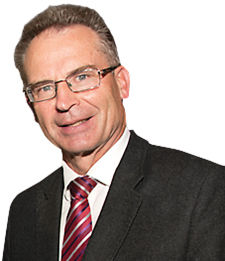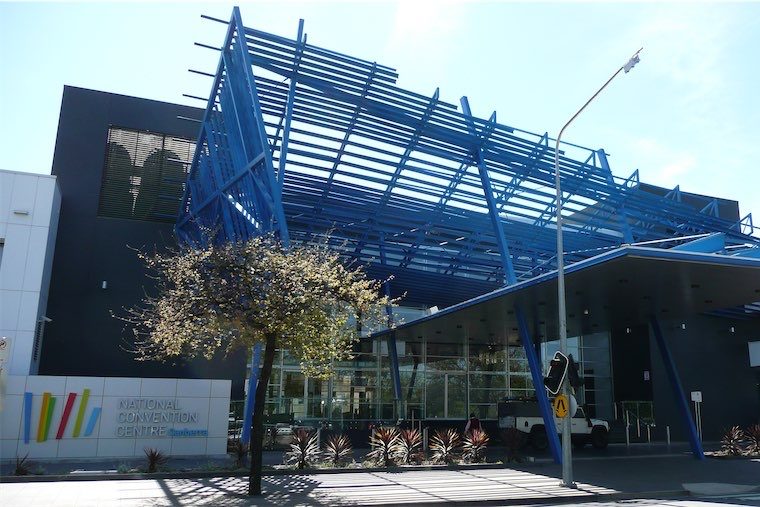“The cumulative impact on funding of mental health across the six years, has been a reduction in funding, in real terms, of $106.2 million,” writes columnist JON STANHOPE.
COMMUNITY mental health services in Canberra have been starved of funding to appropriately meet the needs of the ACT.

In a recent column, I wrote that while I didn’t have a deep understanding of the reasons why the ACT had, based on available data, the worst performing mental health system in Australia in terms of timeliness and access to appropriate services, I said I was nevertheless confident that it was because of Budget cuts and a lack of money.
I also thought that the pressures and the poor performance in the ACT’s acute emergency departments could be reflective of inadequate community mental health services.
My attention has since then been drawn to data published by the Australian Institute of Health and Welfare (AIHW) which confirms that assumption. Community mental health services in Canberra have, in the last six to seven years, clearly been starved, in real terms, of the funding necessary to appropriately meet the city’s mental health needs.
It is instructive to look at ACT government funding for mental health in two tranches. Firstly from 2005-06 to 2011-12 and secondly from 2012-13 to 2018-19 (the last year for which data is available). In the first of those periods, expenditure on community mental health services increased at an average of 6.5 per cent a year, in real terms. However, in the second time frame, the growth in funding was reduced, on average by almost half, to 3.9 per cent.
What that means in real money, is if the funding formula that produced the growth in expenditure in the six years to 2011-12 had been maintained for the next six years, then the budget for community mental health services in 2018-19 would have been $23.4 million higher than it in fact was, i.e. $144.9 million instead of $121.5 million. The cumulative impact on funding of mental health across the six years, because of the change, has been a reduction in funding, in real terms, of $106.2 million.
You may be aware that in the 2021-22 Budget, delivered just last week, the ACT government increased funding for mental health by $13.9 million. Without questioning the desperate need for the increase in funding, it is moot to note that it is quite likely not even half of the amount that the sector would have received this year had the government not relegated mental health, and public health generally, to a lower position in its order of priorities and abandoned the earlier funding formula.
 While some might argue that annual growth, in recent years, of 3.9 per cent in aggregate expenditure in real terms is nothing to scoff at, there are two factors that undermine that conclusion.
While some might argue that annual growth, in recent years, of 3.9 per cent in aggregate expenditure in real terms is nothing to scoff at, there are two factors that undermine that conclusion.
The first is that included in the funding envelope since 2015-16 are the recurrent costs of operating Dhulwa, the forensic mental health facility at Symonston. If one excludes that funding then the expenditure on community health services for the three usually identified mental health target groups of child and adolescent, older persons and the general community increased by only 2.1 per cent between 2012-13 and 2018-19 after having increased by 5.3 per cent or more than twice that amount in the previous six years. It is clear, from this data, that the government has funded the operating expenses of Dhulwa from within the existing mental-health allocation.
The other major factor that needs to be considered is, of course, population growth.
It is helpful to separately consider expenditure on a per capita basis in real terms for each of the three mental health target groups, if seeking to understand movements in expenditure over time. Unsurprisingly, the findings are not pretty.
Expenditure, in Canberra, on child and adolescent mental health services grew by 8.2 per cent a year between 2005-06 and 2011-12 but by only 1.2 per cent a year between 2012-13 and 2018-19. Stunningly, expenditure on older persons’ mental health services actually decreased at an average of 1.6 per cent a year between 2012-13 and 2018-19 having increased by an average of 12.8 per cent a year between 2005-06 and 2011-12.
And, as revealed in the chart, the per capita increase in funding for mental health services for the general community was, in the years 2012-13 to 2018-19 a mere 0.6 per cent a year.
 A further AIHW data set, which compares each Australian jurisdiction’s expenditure per capita on mental health services for the general population for the period from 2014-15 to 2018-19 reveals that while per-capita expenditure increased across the nation at a rate of 1.3 per cent a year, the ACT was the only jurisdiction in Australia, across those five years, to cut mental health expenditure in real terms.
A further AIHW data set, which compares each Australian jurisdiction’s expenditure per capita on mental health services for the general population for the period from 2014-15 to 2018-19 reveals that while per-capita expenditure increased across the nation at a rate of 1.3 per cent a year, the ACT was the only jurisdiction in Australia, across those five years, to cut mental health expenditure in real terms.
It is no surprise then that the ACT has the highest pressure and the worst performance in acute presentations and emergency department wait times.
It has been observed that COVID-19 has exposed and exploited weaknesses in societal structures and socio-economic systems. While the pandemic has undoubtedly increased pressure on government budgets, hospitals and social services, it is drawing a long bow, albeit politically convenient, to attribute to the virus sole responsibility for the consequences flowing from those structural and system defects.
As the AIHW data referenced above reveals, and as claimed by the chair of the ACT Branch of the Royal Australian and New Zealand College of Psychiatrists, Dr Fatma Lowden, in an interview with “CityNews” (“Mental health services in crisis as cases soar”, October 7), the major causal factor of an ACT health system in crisis is the ACT government’s budget priorities and funding decisions.
Jon Stanhope was chief minister from 2001 to 2011 and represented Ginninderra for the Labor Party from 1998. He is the only chief minister to have governed with a majority in the Assembly.
Who can be trusted?
In a world of spin and confusion, there’s never been a more important time to support independent journalism in Canberra.
If you trust our work online and want to enforce the power of independent voices, I invite you to make a small contribution.
Every dollar of support is invested back into our journalism to help keep citynews.com.au strong and free.
Thank you,
Ian Meikle, editor




Leave a Reply